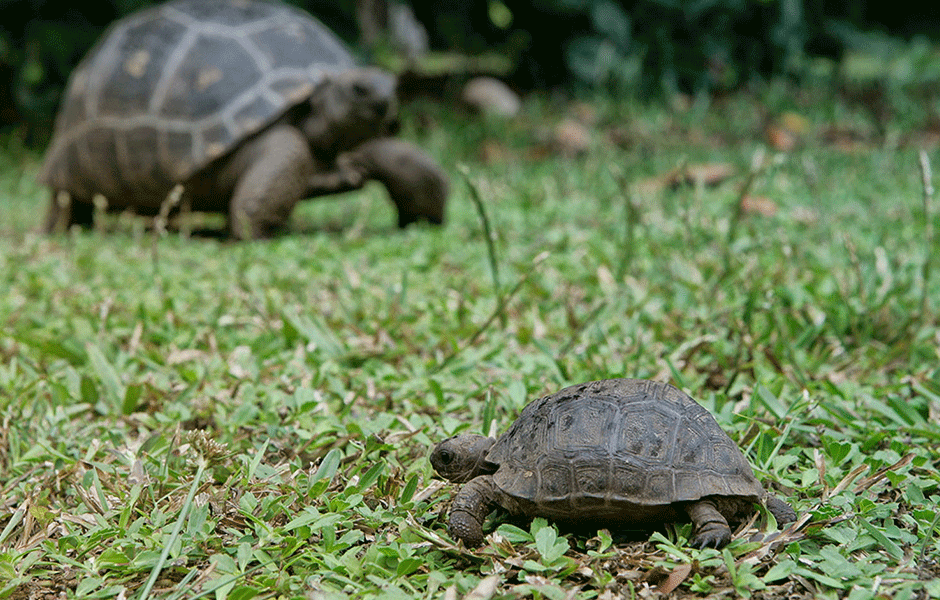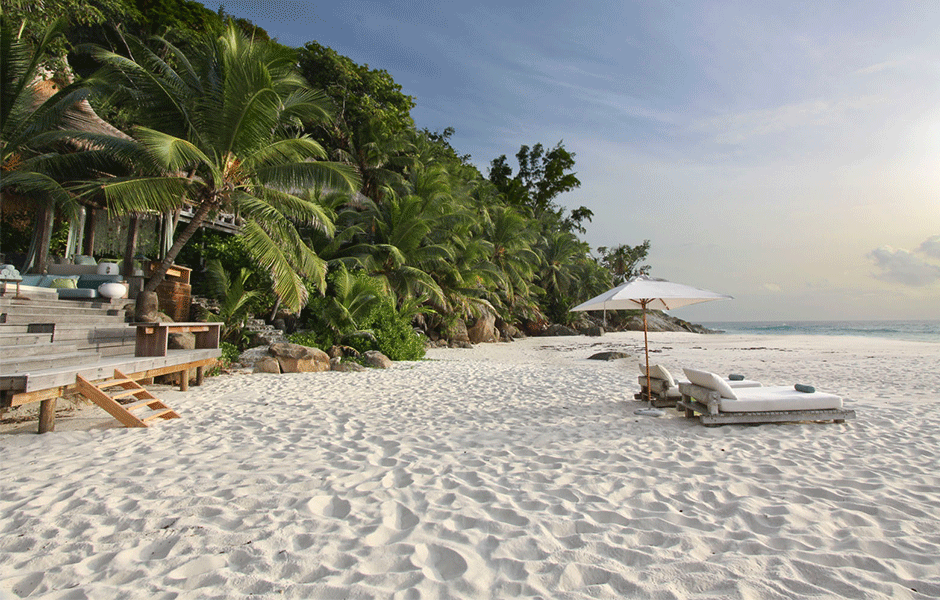For over three centuries, the rich history of North Island in the Seychelles has unfurled into a story of discovery, humanity and pioneering environmental regeneration. I wonder whether the sailors lost at sea, the first (recorded) humans to walk amongst the infamous giant tortoises of North Island…could have ever imagined that one day this would be one of the world’s most treasured natural gifts, loved by all who visit and chosen by the future King of England as the island on which he would celebrate his honeymoon?
A timeline of giant tortoises
1609 In the January of 1609, two ships from an East India Company expedition were blown off course and came across a collection of islands that were as yet not on the map. In search of fresh water, the crew sent a skiff ashore to North Island to investigate this unknown land. The boat landed on Petit Anse, but alas there was no fresh water to be found. There was however a local community of gentle giants who provided much debate… here is a diary excerpt from crew member John Jourdain;
‘But because our men made noe signe of any water wee anchored not. Soe the boate retourned and brought soe many land tortells as they could well carrie. The Tortells were goode meate, as good as fresh beefe, but after two or three meales our men would not eate them, because they did looke soe uglie before they weare boyled and soe greate that eight of them did almost lade our skiffe.’
’
1784 – Next to visit the isle of the ‘land tortel’ were the surviving passengers of a shipwrecked clipper, owned by Signor Anacleto Gomes. In desperate need of water and food, the passengers made their way onto North Island and discovered, like Jourdain and his crew 170 years before them, the enormous population of giant tortoises living in the muddied wetland of the island’s interior. They survived off the dirty water, the meat from the tortoises and the birds of North Island until their rescue.
1787 – The Seychelles became colonised in the late 1760’s and around 20 years later, a Mr. Malavois was sent to the central archipelago by the French Governor of Mauritius, to report on the state of affairs. Here is an extract from his findings…
‘A steep sided island formed by three rocky hills between which lies a freshwater marsh which has standing water all year round. The island now has little woodland cover, following a fire several years ago. The central plain between the three hills has enough cultivable land to form a small plantation; but it is would be essential to destroy the rats which teem on the island. Giant tortoises still occur there and are the largest in the archipelago’.
1787 – 1972 – For two centuries, there is little documented information on our magical North Island. We can only assume that the gentle giants roamed free, happy and undisturbed. Unfortunately, at some point during the 19th century (we are unsure of dates), the island was acquired by a Mr Gustave Beaufond and operated thereafter by his family as a farm. The Beaufond family serviced the growing demand for trade goods between Europe and India – initially with fruit, vegetables, poultry, meat and dairy – later with coconut and vegetable oil. The changing nature of agriculture on the island and indeed across the Seychelles archipelago had a devastating effect on the flora and fauna, destroying habitats and endangering many species of birds, turtles and even the resident colony of giant tortoise.
1972 – The Beaufond family owned the island for over 100 years before the agricultural industry collapsed and they were forced to sell to a German resident. Between 1972 and 1997, the island had two different German owners who kept it as a private farm. Unfortunately, due to the lack of farm workers and proper management, the island became overgrown, the domestic animals ran wild and the buildings became derelict. This sadly meant further destruction to the habitats of the native animal and plant species.
1997 – Hooray! Wilderness Safaris bought North Island. For over 250 years, since the islands of the Seychelles had been inhabited, humans had had a considerable negative impact on the natural environment. Over the last 20 years, Wilderness Safaris have committed their undivided attention to restoring the natural health of North Island’s flora and fauna, recognising it instantly as a Noah’s Ark – a sanctuary whose natural habitats needed rehabilitation and regeneration.
2005 – 2017 For the Wilderness Safaris team, the process of rehabilitation has been a bumpy and not always easy ride. A number of major successes were achieved in the early 2000’s, including the eradication of the black ship rat (mentioned by Malavois in 1787) and the reintroduction of the critically endangered Seychelles White-Eye bird and most excitingly the Giant Aldabran Tortoise. The island regained its status as a Green Turtle stronghold and the endangered Hawksbill Turtle’s began to nest on the power soft white beaches once more. Today we share the story and history of this precious natural treasure and applaud the incredible team of devoted people who have nursed this island back to health. Those lucky enough to visit North Island are guaranteed to leave with a touch of the island’s spirit in their heart.

Want to experience your own bespoke tortoise adventure to North Island in the Seychelles? ENQUIRE NOW














